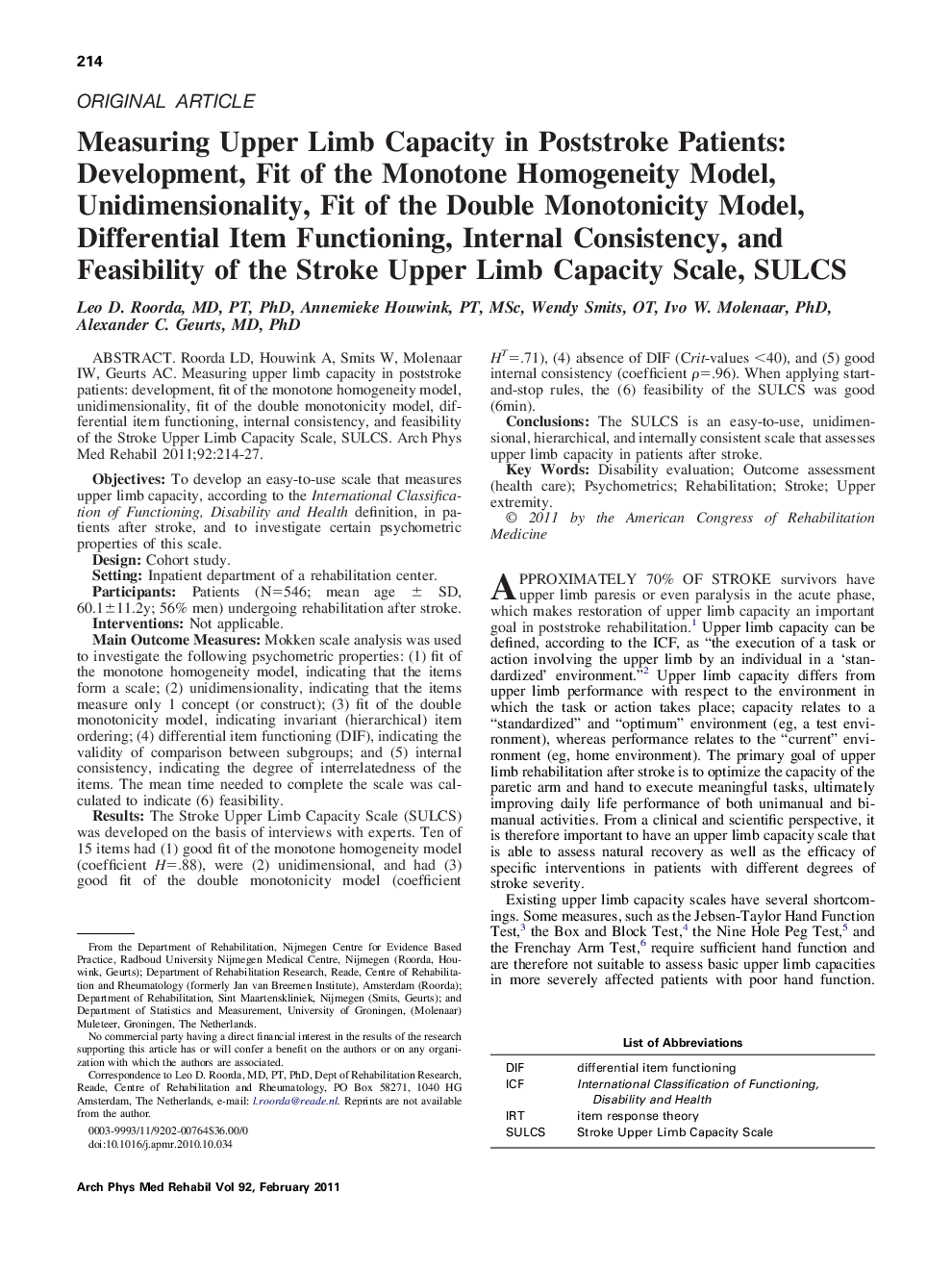| کد مقاله | کد نشریه | سال انتشار | مقاله انگلیسی | نسخه تمام متن |
|---|---|---|---|---|
| 3450480 | 1595743 | 2011 | 14 صفحه PDF | دانلود رایگان |

Roorda LD, Houwink A, Smits W, Molenaar IW, Geurts AC. Measuring upper limb capacity in poststroke patients: development, fit of the monotone homogeneity model, unidimensionality, fit of the double monotonicity model, differential item functioning, internal consistency, and feasibility of the Stroke Upper Limb Capacity Scale, SULCS.ObjectivesTo develop an easy-to-use scale that measures upper limb capacity, according to the International Classification of Functioning, Disability and Health definition, in patients after stroke, and to investigate certain psychometric properties of this scale.DesignCohort study.SettingInpatient department of a rehabilitation center.ParticipantsPatients (N=546; mean age ± SD, 60.1±11.2y; 56% men) undergoing rehabilitation after stroke.InterventionsNot applicable.Main Outcome MeasuresMokken scale analysis was used to investigate the following psychometric properties: (1) fit of the monotone homogeneity model, indicating that the items form a scale; (2) unidimensionality, indicating that the items measure only 1 concept (or construct); (3) fit of the double monotonicity model, indicating invariant (hierarchical) item ordering; (4) differential item functioning (DIF), indicating the validity of comparison between subgroups; and (5) internal consistency, indicating the degree of interrelatedness of the items. The mean time needed to complete the scale was calculated to indicate (6) feasibility.ResultsThe Stroke Upper Limb Capacity Scale (SULCS) was developed on the basis of interviews with experts. Ten of 15 items had (1) good fit of the monotone homogeneity model (coefficient H=.88), were (2) unidimensional, and had (3) good fit of the double monotonicity model (coefficient HT=.71), (4) absence of DIF (Crit-values <40), and (5) good internal consistency (coefficient ρ=.96). When applying start-and-stop rules, the (6) feasibility of the SULCS was good (6min).ConclusionsThe SULCS is an easy-to-use, unidimensional, hierarchical, and internally consistent scale that assesses upper limb capacity in patients after stroke.
Journal: Archives of Physical Medicine and Rehabilitation - Volume 92, Issue 2, February 2011, Pages 214–227